How can the clinic hold staff accountable for providing better patient care?
Strategies that effectively communicate expectations and utilize positive reinforcement to empower medical assistants in the Family Medicine clinic.
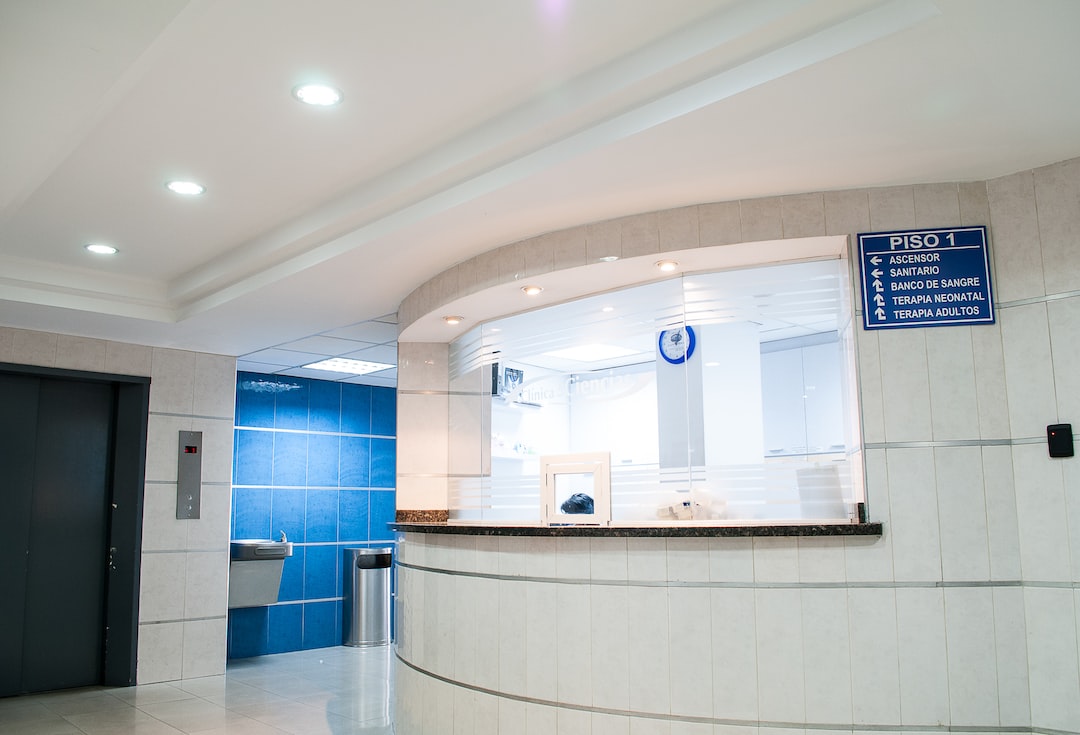
Project Type: Behavioral research & design | Date: September - December 2022 | Team: Institute for Healthcare Delivery Design, UIC
My Role: Primary research, Analysis & Synthesis, UX design
Challenge
Family Medicine at UI Health provides a variety of primary care services for patients of all ages. This project is one of the follow-ups of the design sprint that the Institute for Healthcare Delivery Design conducted for the clinic in July 2022.
Poor teamwork and dynamics around MAs(medical assistants) were identified as one of the critical challenges that largely influenced patient care and provider & staff satisfaction at the Family Medicine clinic. There were different understandings of MA roles and responsibilities, a lack of trust and motivation, and a feeling of being under-appreciated. These issues have existed for more than five years and have worsened as the MA group grew to 13 people and affected every stakeholder in the clinic.
The department sought creative problem-solving within the various constraints and actionable approaches to increase MA accountability and collaboration.

“People become complacent. It becomes the culture and places. They're just used to things being a certain way.”
------ Medical Assistant
Solution
By understanding the gaps between the current system and the stakeholders’ needs and considering MAs’ specific working contexts, we identified the essential components to help MAs thrive.
Everything starts with clear and tangible expectations.
Positive reinforcement should be the main mechanism to promote MA contribution.
Gated areas for social interactions are critical to fostering mutual understanding and building relationships in a humane way.
We created a systems map depicting the ideal flow of information and feedback in the clinic.
Move the handlebar to compare the current state and the ideal state ►
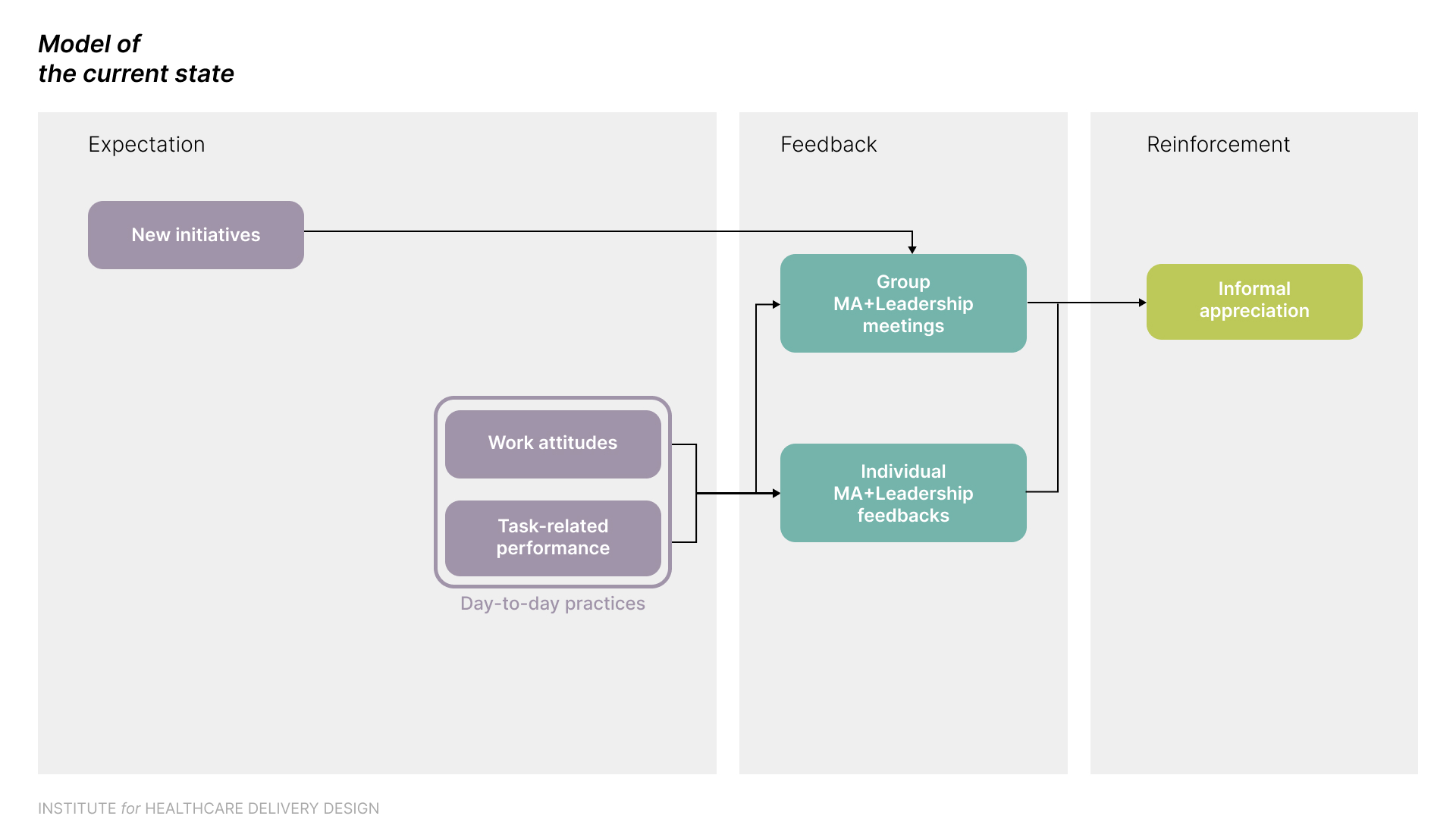
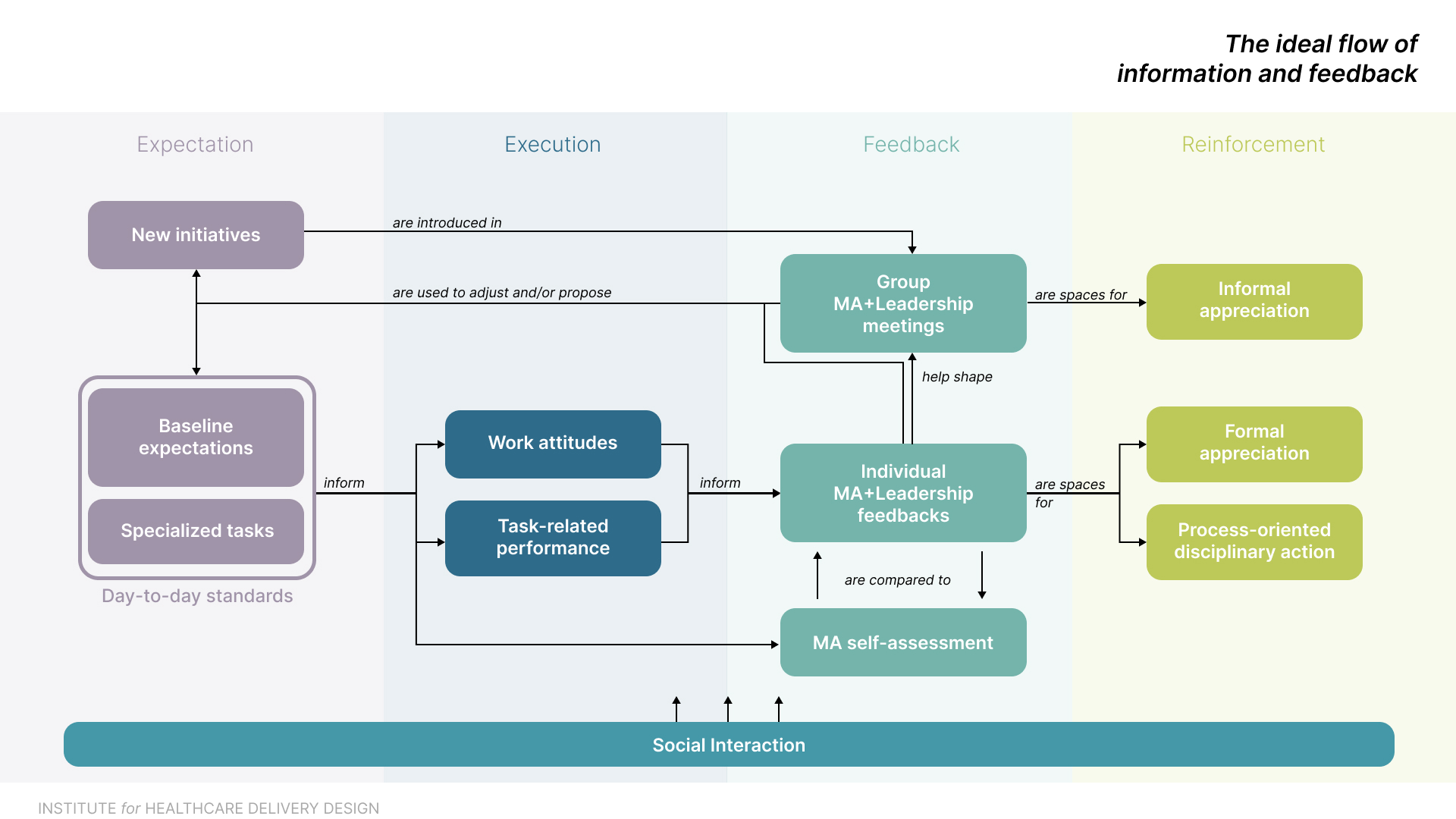
In addition to the system map, we offered two actionable proposals targeting expectation delivery and MA engagement to help address the challenges in the short term.
Expectations should be visible and tangible to be relevant to MAs’ day-to-day work.
Expectations should promote alignment and initiate conversations instead of serving as a tool for punishment.
Three forms of expectations
01 During training/learning
As the first step to introducing new initiatives or onboarding. Create task flows based on the official documentation for ambulatory clinics to build a thorough understanding of the responsibilities and process.
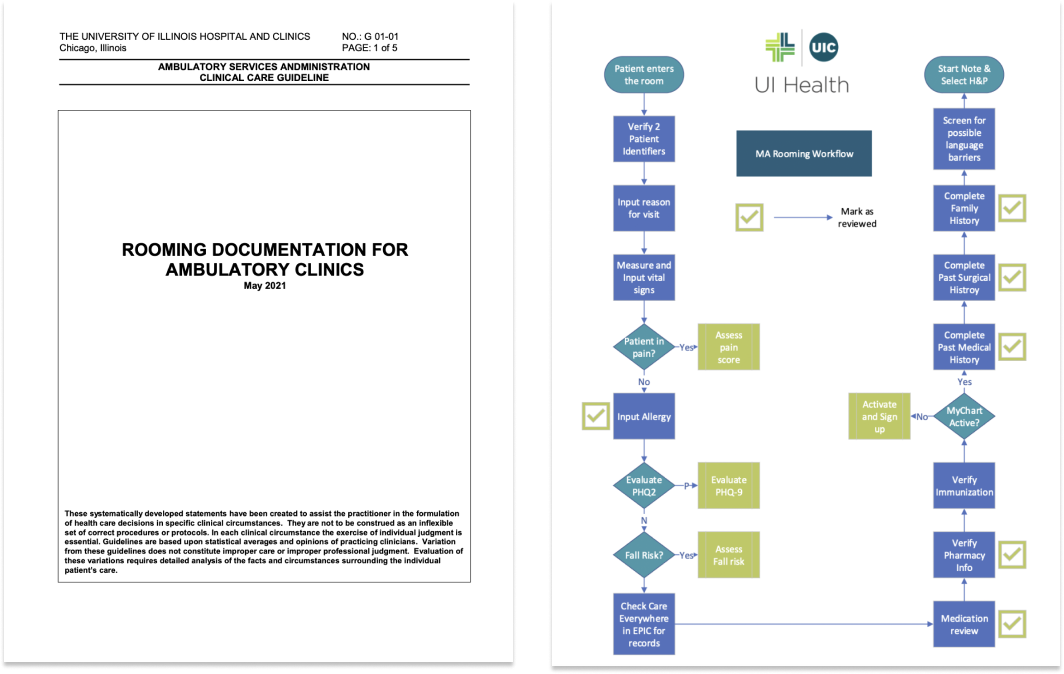
02 During day-to-day practice
As a handy tool that reminds MAs about the key checkpoints of every task. A light checklist that helps augment the workflow.
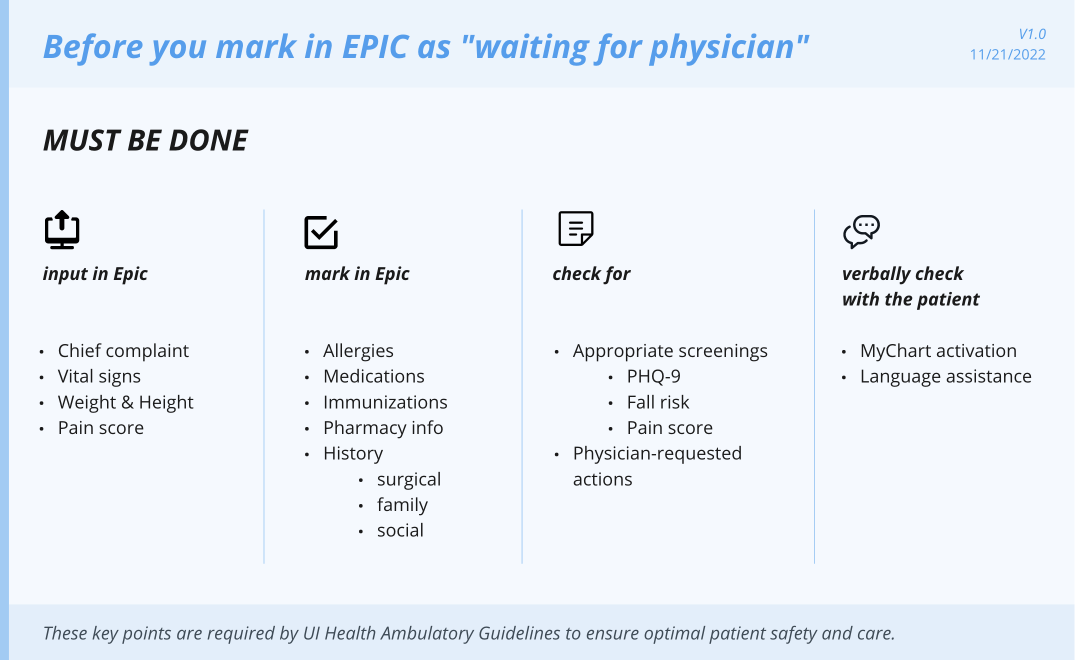
03 During self-assessment
As a guide that helps MAs understand and communicate their performance. Self-assessment ahead of formal performance reviews to facilitate goal-setting
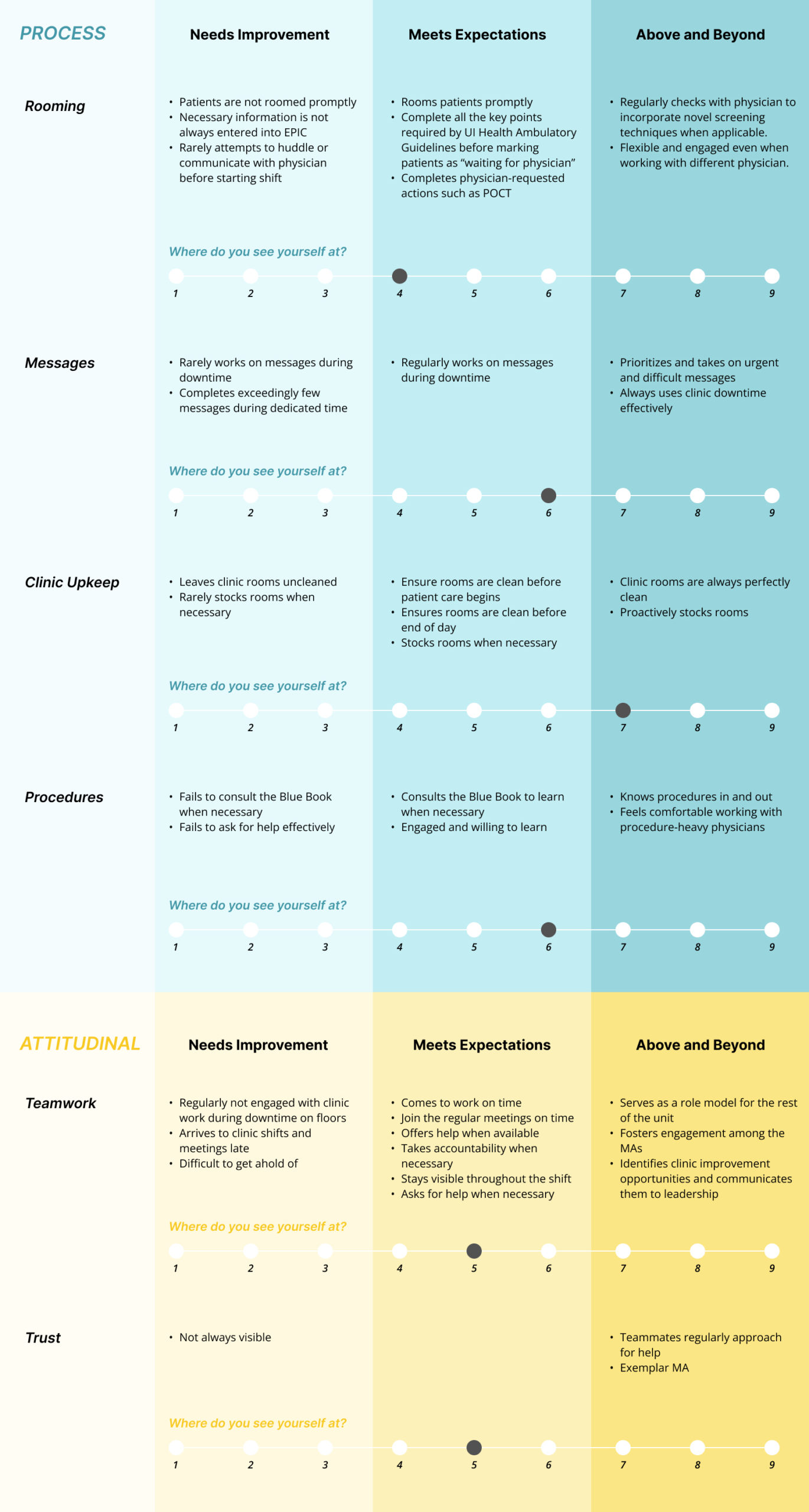
Move the handlebar to the right to check the proposed future state. ▼
Increasing MAs’ involvement in the lifecycle of a new initiative is not only key to the sustainability of innovations but also leverages the expertise of high-performing MAs
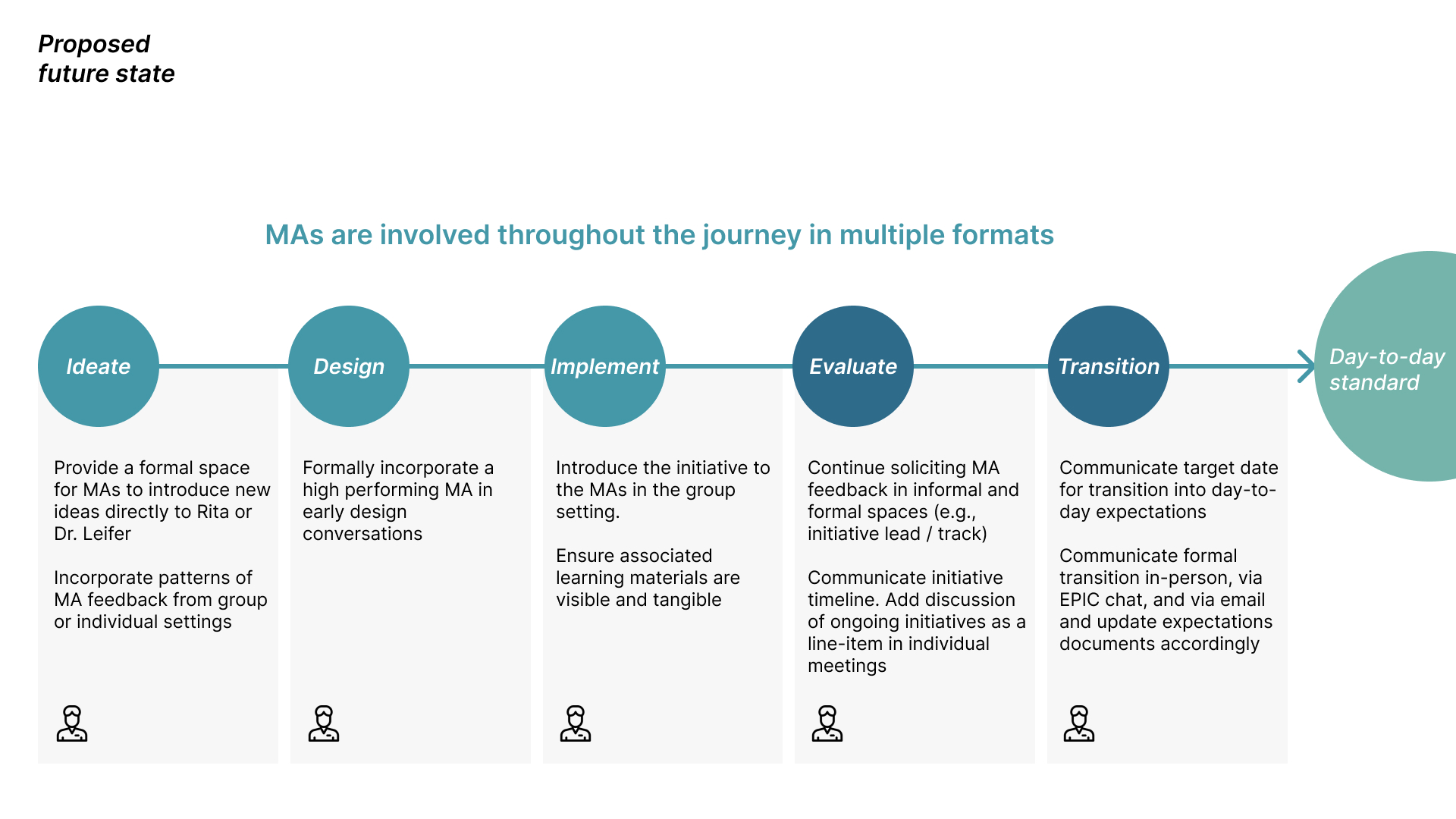
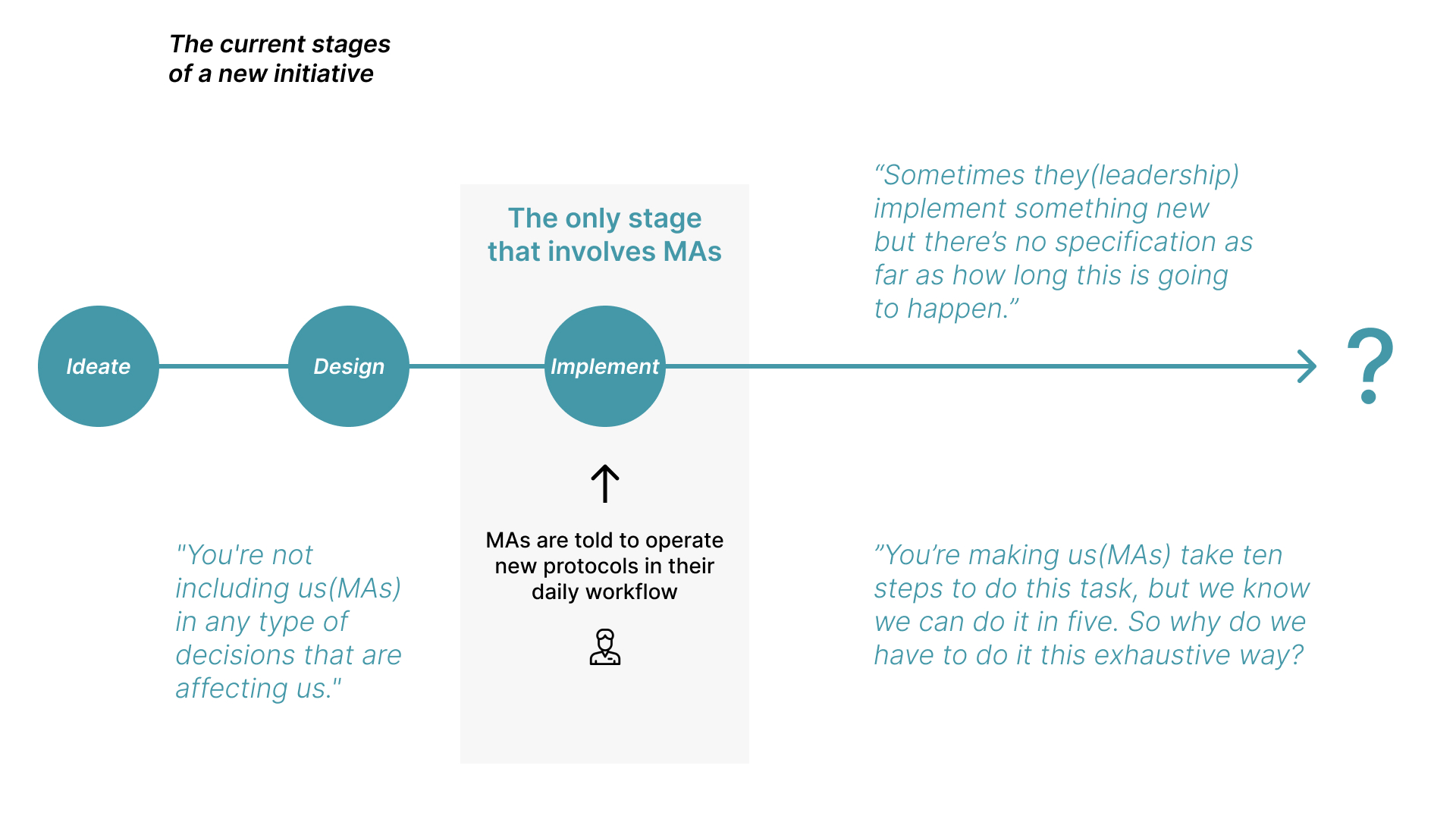
Design Impact
The templates and examples in the proposals helped the leadership engage MAs in the discussions and co-create alignment. Through the step-by-step build of the desired system, the stakeholders had a deeper understanding of how they could better support the MAs.
We saw a shift in leadership's attitude toward the MA-centric feedback system and the role of social interaction. This became a key step in building a positive work culture and repairing relationships.
Check out the full report here
